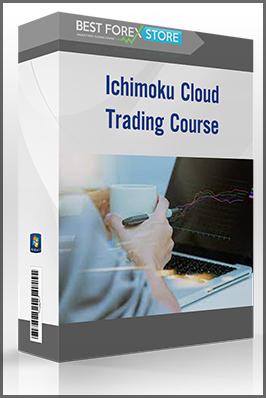Description
Martin Pring – 2 Day Personal Training Course (Seminar Package)
Note: The course package has limited
Include:
- Martin Pring – Introduction to Technical Analysis
- Martin Pring – On Price Patterns
- Martin Pring – Live in London
- Martin Pring – Technical Analysis Explained (2nd Ed.)
- Martin Pring – Technical Analysis Explained (3rd Ed.)
- Martin Pring – Martin Pring on Market Momentum
- Martin Pring – Technician’s Guide to Day and Swing Trading
- Martin Pring – Learning KST
- Martin Pring – Momentum Explained (Principles & Indicators)
- Martin Pring – How to Select Stocks Using Technical Analysis
- Martin Pring (for The International Institute of Technical Research) – Lessons on Technical Analisys
- Martin Pring – The All Seasons Investor
- Martin Pring – The Investors Guide to Active Asset Allocation
This seminar will equip the novice and intermediate investor/ trader with the technical tools to more confidently and intelligently attack the markets. It will begin with important technical concepts, such as price patterns, momentum and relative strength and culminate by putting it all together through asset allocation strategies using InterMarket relationships and exchange traded funds.
Day I will cover the subject of price patterns and will introduce new material from Martin’s latest book – Price Patterns Explained. An explanation of basic momentum interpretation is also covered in Day I.
The second day will cover the subject of momentum in greater depth, including a primmer on Martin’s KST indicator. The day will also include a session on how to select stocks drawing on the knowledge picked up from the momentum sessions. It will also include an explanation of the concept of relative strength and explain how the industry group rotation develops around the business cycle. One and two bar price patterns are also covered in the second day.
Martin is a great believer in the behavioral aspects of markets and will go to great lengths to explain how psychology is reflected in chart pattern construction and momentum indicators. For only when traders and investors can understand the psychological rationale for technical concepts can they correctly interpret and apply them.
Each day will end with an interactive workshop in which participants will be provided with case studies, which will be actively discussed. Most previous attendees agree that this is the best and most useful part of the day when they are in the driver’s seat
Day One
I Basic Technical Principles
This opening presentation will explain some basic technical concepts, such as what technical analysis is, what you should and should not expect from it. Subjects subsequently covered include bar charts, line charts candlesticks, the significance of logarithmic vs. arithmetic charts, support and resistance. The discussion will expand to include trend identification techniques such as peak and trough analysis, trendline construction and the significance of moving averages, their strengths and limitations. Volume is also a key ingredient, so its interpretation will also be covered.
II Classic Price Patterns
This presentation will use the rectangle as a case study for setting out the principles for interpreting all price patterns. The discussion will then expand to include, head and shoulders, double bottoms and tops, broadening formations triangles and cup and handle formations. New twists on old patterns such as the Chinese double bottom and the “double rotten” pattern will wrap up this innovative session.
III How to Interpret Momentum Indicators
Momentum is a generic term that embraces all oscillators. This session will outline key interpretive principles that apply to them all. It will also prove that sentiment and momentum are closely related. Martin will show you that if sentiment indicators are not available, as in the case of individual stocks for example, how the correct use of momentum can be substituted in its place. The presentation will also explain why it is important, even for swing traders to know the direction of the main trend, and how short-term momentum indicators can be used to identify primary trend reversals at an early stage. Included will be unique concepts developed by Pring such as advanced breakdowns and breakouts, extreme swings, mega overboughts and oversolds.
Day Two
I One- and Two-Bar Patterns
One and two bar patterns indicate dramatic short-term changes in psychology and therefore price trends. In many respects they are similar to candlesticks but there are some important differences which will be explained. They certainly offer signals close to turning points and allow the realistic close placement of stops which limits risk. Patterns covered will include, outside bars, inside bars, gaps, two and three bar reversals, Pinocchio, key reversal and exhaustion bars. These patterns only have short-term significance, but when they appear in the charts with the right conjugation of indicators they often develop at major turning points. Martin will explain how to recognize such juncture points.
II Applying Momentum Principles with Specific Indicators
This session will draw on the interpretive techniques outlined in the momentum presentation from Day using actual market place examples. Indicators to be covered include the RSI, CMO, MACD, trend deviation oscillators with a generous portion being allocated to Pring’s own KST* indicator. He will also outline a strategy that shows how oscillators can be used in conjunction with trend following indicators to earn more profits, regardless of whether there is a trading range or trending environment. The integration of price and volume momentum will complete this comprehensive tutorial
III Using InterMarket and Technical Analysis to Select ETFs and Stocks
One of the key tools used in stock and sector selection is relative strength analysis. In this down to earth practical presentation Martin will explain the concept of relative strength as applied to the “top down approach”. He will also cover such topics as equities and the business cycle, group rotation, isolating the early cycle from the late cycle leaders. He will back up this theory with evidence showing how you can recognize that part of the cycle when specific sectors over or underperform the market. We believe this information alone will be worth the price of the seminar. The tutorial will be rounded out with an explanation of how to integrate relative and absolute momentum analysis into the sector ETF and stock selection process.
Workshop/Case Studies
In real life situations our judgment cannot help but be clouded by the media noise going on around us. In this session participants will be split up into groups and provided with anonymous case studies of real market situations, thereby removing any bias that might otherwise have crept in. Drawing on the material covered during the day each group will elect one member to become a presenter on what the group feels will happen next based on their review of the indicators. Each presentation will be critiqued and will end with an unveiling of what actually occurred. There are no tricks or catches to this session, just good old-fashioned technical analysis. Ironically, this is the session of the day when participants learn the most.
* Introducing the KST and Martin’s latest indicator – the Special K
Price, at any one time, is a reflection of a number of different time cycles. Most oscillators, such as the RSI, only take one time span into consideration in their calculation and are missing out on a lot of the factors influencing prices. No indicator can take all cycles into consideration, but the KST, by incorporating four different time frames in its calculation, moves us closer to the ideal situation. This indicator is most often used with daily data, but formulas have been derived using tick, 15-minute and 30-minute bar charts for intraday activity.
KSTs can also be constructed for short, (3 to 6 weeks), intermediate (6 weeks to 9 months) and long-term (1 to 2 years) trends using weekly and monthly data. By considering these three trends, it is possible to gain perspective on the overall financial cycle.
If you’re driving a car in a strange city and need to get directions, it’s easy to stop at a gas station and buy a map. Wouldn’t it be great if you could also buy an investment map pinpointing the market’s proximity to major tops and bottoms? Well, the short-, intermediate- and long-term KST’s enable you to do so with the KST Market Cycle Model. Of course, no system is perfect, but the KST approach certainly helps put the odds in your favor. Better still, combine them all into one indicator and you get the Special K.
This presentation will outline the theory behind the KST and the Special K, show you the formulas and how the indicator is interpreted. A full description of the market cycle model will follow, including its adaptation to relative strength analysis. Examples from intra-day to primary trend indicators will be featured throughout the presentation.
Martin Pring, 2 Day Personal Training Course (Seminar Package), Download 2 Day Personal Training Course (Seminar Package), Free 2 Day Personal Training Course (Seminar Package), 2 Day Personal Training Course (Seminar Package) Torrent, 2 Day Personal Training Course (Seminar Package) Review, 2 Day Personal Training Course (Seminar Package) Groupbuy.





Reviews
There are no reviews yet.